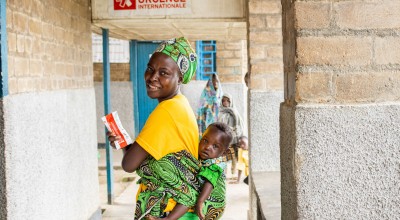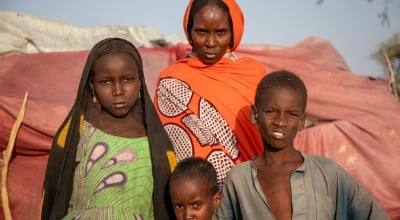
Read our 2024 annual report

Knowledge Hub
Forty years since the first AIDS cases were reported in 1981, HIV still threatens the world, which is off-track to deliver on its commitments to end AIDS by 2030.
The HIV pandemic is even at risk of a resurgence, not because of a lack of knowledge or tools, but because of structural inequalities that obstruct proven solutions to HIV prevention and treatment, especially in key areas of Africa.
That doesn’t mean all hope is lost. Here are 5 things to know about the AIDS crisis in Africa in 2021, including where we’re falling short, what’s been done to get us back on track, and what we still need to do.
1. We’ve made progress fighting AIDS but are losing ground — especially in western and central Africa
The United Nations classifies the AIDS crisis in Africa as an ongoing emergency, particularly in the western and central regions of the continent. UNAIDS Executive Director Winnie Byanyima writes:
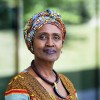
The early gains made against HIV in this region have not been translated into the sustained progress that has been made in other parts of sub-Saharan Africa.
This area of Africa, which includes Burkina Faso, Liberia, Niger, Sierra Leone, Central African Republic, Chad, and Democratic Republic of Congo, saw 150,000 AIDS-related deaths last year, representing approximately 21% of all deaths from AIDS-related illnesses worldwide. 2020 also saw 200,000 new infections of HIV in western and central Africa.
Despite the advances in treating HIV/AIDS, these gains have yet to reach the countries most affected in Africa. UNAIDS estimates 1.2 million people in the west and central countries of the continent are waiting on lifesaving HIV treatment. 65% of all children are not being treated. ‘If we don’t act now, not only will many more lives be lost,' Byanyima cautions, 'but containing the AIDS pandemic will be more difficult and expensive in the coming years.’
2. COVID-19 hasn’t hit African countries as hard, but it adds complications for HIV treatment
As a continent, Africa has had some of the lowest rates of COVID-19 infections, with a current average of 10,000 new infections across 54 countries reported each day. Part of this, as Byanyima points out, is due to the fact that many countries currently facing the AIDS crisis already have experience in public health crisis response.
However, of the 37.6 million people living with AIDS around the world, 67% live in sub-Saharan Africa. Even moderate outbreaks of COVID-19 in these countries can come with higher comorbidities for people with compromised immune systems, with estimates from the UK and South Africa suggesting that HIV-positive people are twice as likely to die from COVID if contracted. Lockdowns are also preventing people from getting tested, treated, and accessing the resources they need. According to the Global Fund to Fight AIDS, Tuberculosis and Malaria, HIV testing declined by 41% and referrals for diagnosis and treatment declined by 37% in 2020.
Much like the inequities of HIV/AIDS treatment in Africa, COVID vaccine inequities are also adding more unnecessary risk to the lives of people living with HIV. Last month, the World Health Organization reported that only 16% (or nine out of 54) African countries had met a target of vaccinating 10% of their populations against COVID-19.
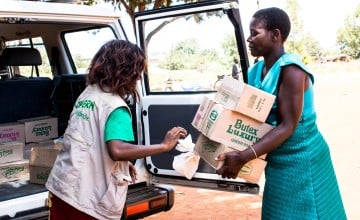
3. Women and girls are at especially high risk of contracting HIV
The face of AIDS in 2021 is that of an adolescent girl. Of the 200,000 new diagnoses of HIV in Africa last year, young women and adolescent girls ages 15-24 made up 27% of those new cases. The United Nations reported 1,000 new infections per week in this demographic.
Gender inequalities and gender-based violence restrict the rights of women and adolescent girls, including their ability to refuse unwanted sex or negotiate safer sex, and to access HIV and sexual and reproductive health services. Learn more about how gender inequality impacts the AIDS crisis.

4. Change has to happen both for those who are living with HIV and those who aren’t
One of the biggest challenges around the AIDS crisis in Africa is the social stigma that is applied to people living with HIV. In some countries, UNAIDS reports that HIV-positive patients are denied access to healthcare services based on their status, with known figures ranging from one to six per cent of all people living with HIV (Liberia, Sierra Leone, Democratic Republic of Congo) to as high as 41 to 53% (Algeria and Morocco, respectively).
The effects of HIV/AIDS on the poorest households in communities is high and has a negative impact on livelihoods, including workplace discrimination. This leaves people living with HIV among those left furthest behind in the fight to end extreme poverty for all. A baseline survey conducted by Concern in Tonkolili District, Sierra Leone, at the start of a project launched in February 2013 found that only 5.8% of men and 4.3% of women had accepting attitudes towards people living with HIV. Furthermore, only 5.3% of men and 5.8% of women had voluntarily tested for HIV, due in large part to a lack of confidentiality at testing centres. We found similar negative attitudes in Burundi, with only about half of all surveyed respondents saying that they would be willing to care for a family member who became sick with HIV. One-third said they would not buy fresh vegetables from a shopkeeper or food seller who is HIV-positive.

While these figures are nearly a decade old, they represent ongoing attitudes in communities where we work to ensure both that there is equity for people living with HIV, and that there are adequate resources available to men and women (especially adolescents) so that they can stay healthy and safe.
5. Community-focused response and community-led services are key to ending the AIDS crisis
In addition to fostering equity and addressing risks among key populations at risk for HIV (including sex workers, intravenus drug users, men who have sex with men, transgender people, and incarcerated people), leading with community has proven to be key to addressing the AIDS crisis in many of its facets.
In Burundi, for example, Concern's work with the Graduation model has included sensitising community members around HIV and AIDS by improving their knowledge of the disease and prevention methods, as well as their attitudes towards people affected by it. Programme participants in the city of Cibitoke saw a positive impact of the programme in terms of voluntary HIV testing and the use of methods to prevent AIDS. We’ve incorporated similar messaging and initiatives into our Graduation programming in Malawi.
In Sierra Leone and Ethiopia, we’ve employed community drama and ‘Community Conversation’ approaches to support HIV education and social and behavioural changes in responses to HIV and AIDS. Working with local partners and governments, we found that a holistic approach that focused on individual strengths created a whole greater than the sum of its parts, reflected in dramas that focused on HIV transmission, prevention, risky behaviours, the importance of voluntary and confidential counselling and testing, and the negative impact of stigma and discrimination. Testing services were offered immediately afterwards, with partners facilitating access to counselling services and antiretroviral treatment.
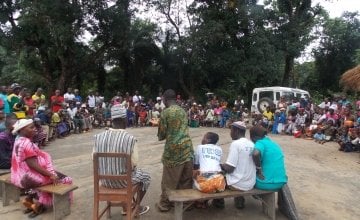
The HIV/AIDS Crisis: Concern’s Response
The aim of Concern’s HIV and AIDS work ongoing is to help reduce new HIV infection and to minimise the impact of HIV and AIDS among people living in extreme poverty, through mainstreaming and integrated responses in all sector programmes, and in support of national government efforts within host countries.
HIV is a cross-cutting issue within our programmes. Due to its multifaceted nature, HIV requires a response that both contributes to the prevention of HIV and mitigates the impact that HIV and AIDS has on the extreme poor. In Bangladesh, Burundi, and Sudan, our teams and their national partners are responding to HIV and AIDS through targeted awareness raising, outreach sessions, and HIV prevention education.
Our HIV response in Ethiopia is integrated within the Livelihoods Programme and mainstreamed within the Emergency Nutrition response. Concern Kenya’s HIV response is in partnership with Sonke Gender Justice.




